
SUP Technique: Fixing Problems with the Catch
Over the next few months we’ll be publishing a series of posts addressing technique issues commonly seen in the SUP stroke – what they are, how they affect your performance, how to know if you or someone you’re helping/coaching needs to address any of these issues, and what you can do to correct them. This month we’ll start by looking at three issues associated with the catch.
Before we start, I’d like to make a comment on the photos you’ll see which illustrate points being made in the text. All of these photos come from video paddlers I have worked with have submitted for analysis at some point or another. Some of these are “before” photos and some of them are “after”. In all cases, these paddlers took the initiative to improve their technique and, in all cases, were successful to at least some degree. I applaud them for their desire to improve and willingness to use video analysis and hard work to do so.
What is the catch?
We can define the catch as the process of gathering water on the face of the paddle blade at the front of the stroke, holding it there and starting to work against it. Ideally this should occur rapidly and dynamically, with the “gathering” part and the “working against the water” part happening almost simultaneously.
Power is simply force expressed as a function of time, so if we’re going to have a powerful catch it isn’t enough to just gather lots of water on the blade. To accelerate optimally, we’ve got to begin to work against that water explosively and dynamically as soon as we’ve gathered water without letting any water slip off the blade. This work against the water gathered on the blade (from this point forward we’ll call this “pulling”) needs to be incredibly finely timed. If we start to pull too soon, we likely won’t gather enough water to hold on our blade and work against. If we start to pull too slowly we won’t get the acceleration we should and may even be slowing our board down instead of increasing its speed. The key is to make sure we have water gathered on our blade before we start to think about pulling. If we try to “pull” before we’ve finished “gathering” we can get ourselves in trouble.
Let’s look at three of the most common mistakes associated with the catch and discuss some fixes for each.
1. Air catching
What it is: We say that someone is “air catching” if their point of maximal forward reach with the blade tip is in the air and not in the water. The blade tip ends up moving backward from this point of maximal reach in the air before it contacts the water and reach attained by the paddle tip in the air is quickly lost before the tip comes anywhere near contacting the water. This means positive blade angle is also lost before the tip contacts the water. The time spent getting all that reach in the air Is wasted and the effective reach (reach where the blade face is loaded up with the water) is much less than it should be. This results in an ineffective catch which provides little impulse to move the board forward.
Identifying this problem in your stroke: If you’re seeing a splash consistently coming off your paddle as your blade tip enters the water you’re probably air catching. This splash will be directed towards you and often ends up on top or your feet. It’s also likely that you’ll be feeling your catch isn’t powerful enough and that you just aren’t grabbing enough water. You’ll feel your board isn’t accelerating as fast as it should be early in the stroke. If you paddle with others who paddle well, these deficiencies should be easier to discern as they’ll move their board much further each stroke than you do.
Identifying this problem in others or in yourself when looking at video: The biggest indicator of air catching is that your blade reaches farther forward in the air than where it actually contacts the water. You’ll see the blade traveling backwards (towards you) before it contacts the water. This may, though not always, cause it to kick up a pretty sizeable splash that will likely wet the deck or the standing area of your board (and your feet). Figures 1 and 2 show a fairly mild example of an air catch.


You’ll note in figure 1 the blade tip reaches farther in the air than the point at which it first contacts the water in figure 2. As this is a relatively mild case it is not kicking up as much of a splash as a more severe case might. Lastly, since the blade is moving back before it contacts the water, it is going to continue moving back once it finally contacts the water but before it’s fully buried. You’re almost certain to see a great deal of blade travel from the point where the blade tip contacts the water to where it is finally buried, which represents lost opportunity to establish effective connection with a positive blade angle, use big muscles and body weight, and maximize the acceleration of your board (figure 3).

Correcting the issue: To correct an air catch it is imperative to get the blade tip to contact the water at the point of maximum reach rather than having the point of maximal reach be in the air, ahead of where the tip contacts the water. Here are a few things that help make this easier:
- Don’t over-reach in the set up (in the air): If you’re stretching out of your skin to reach with the blade in the air, well off the surface of the water, it is a near certainty that you’re going to air catch. Instead, have a comfortable rotation/reach in the set up and then think about continuing to extend forward with your bottom hand and shoulder as you drop to meet the water with your blade at the catch. Figure 4 shows a comfortable reach in the set up and figure 5 shows continued reach to the catch. In this example the blade is essentially reaching right to the moment it contacts the water, completely eliminating the possibility of an air catch.


- Think “reach to catch” rather than “pull to catch”: This is basically another way of saying what was just described in the last bullet. If you’re thinking of “reaching” into the catch your paddle will almost certainly contact the water at the point of maximal reach. In fact, it may even be moving forward slightly even as it contacts and enters the water, ensuring that you get your blade buried quickly. Figure 4 and 5 illustrate the “reaching to catch” principle, as very clearly the paddler has continued to reach until the moment the blade is contacting the water. In fact, the paddler increases her shoulder rotation slightly so that it appears as if she is lowering her entire paddling side to catch the water. This increased shoulder rotation can really be seen in figures 6 and 7.


Note the angle between the torso and the paddling side arm open up from figure 6 to figure 7. On the other hand, if you’re “pulling” to the catch you’ll be moving your blade backwards towards your body before the tip even begins to contact the water. This trend will continue even after the tip hits the water, causing the blade to be moving backwards in the water when it should be moving deeper into the water and gathering water on the blade. This, of course, will result in the blade taking too long to get buried and is a lost opportunity to get body weight on the paddle with positive blade angle.
2. Taking too long to bury the blade
What it is: Most people don’t air catch. The telltale splash it often produces is enough to help them identify the problem and work at self-correcting it. However even if they’re not air catching, the majority of novice to intermediate level paddlers make the critical error of taking too long to bury their blade. The blade begins traveling backwards once the tip contacts the water and continues traveling backwards as it is slowly being buried. The result is that the blade travels far too great a distance from the point of entry till it becomes completely buried. This results in lost opportunity to get body weight on the paddle early in the stroke, as a blade that is not fully buried will not support much body weight. It also results in lost opportunity to engage big muscles against a fully loaded paddle as hips and legs will be engaging against a paddle that is only partially loaded with water. Finally, it results in lost opportunity to do work with a positive blade angle. An accelerometer attached to the board shows us that the board accelerates at a rapidly increasing rate from entry until maximum acceleration is reached when the blade is vertical. From there the rate of acceleration rapidly decreases as negative blade angle increases. Failing to get the blade buried fully with positive angle means that a tremendous amount of connection and therefore acceleration is lost through the most effective part of the stroke.
Identifying this problem in your stroke: Unfortunately, this problem is much more difficult to self-diagnose while paddling than air catching is. While air catching often kicks up a splash that is an immediate clue to the problem, taking too long to bury your blade does not offer up such an easy to identify telltale sign.
One of the things I recommend is looking to see where your blade tip first appears to contact the water and then where it actually appears to get buried, using your board as a reference point. You should be able to do this without paddling with your head down by using your peripheral vision. If you’ve got a board with identifying marks (letters, stickers, etc) you can use them as references. I use the S-T-A-R-B-O-A-R-D on the deck of my board. If your board doesn’t have any reference marks like this you can put pieces of tape on your board to accomplish the same thing. Try to identify where the blade first makes contact and then where is looks like it is fully buried, and from there try to get an idea of the amount of blade travel that was involved by checking the distance between the two reference points you’ve identified. You should be trying to minimize this distance. If it appears larger than about 6 inches I’d suggest that you can improve this part of your stroke. If it is greater than 12 to 18 inches then taking too long to bury the blade is a major issue in your stroke and demands immediate attention
Identifying this problem in others or in yourself when looking at video: This issue can be difficult to identify when looking at others paddle in real time. Unless the paddler is taking far too long to bury their blade and their blade is traveling a substantial amount before getting buried it is often difficult to identify this problem. However, using video and viewing it in slow motion or frame-by-frame readily exposes this issue if it exists.
You’ll see the blade tip contact the water with the blade at a positive angle, then see the blade immediately begin to travel towards the paddler, quickly losing angle without getting fully buried. In extreme cases you’ll see that the blade only becomes fully buried as it is at or near vertical, meaning that the entire front end of the stroke is lost from the perspective of using big muscles and body weight on a fully loaded paddle with positive angle. Figures 8 and 9, and 10 and 11 show fairly egregious examples of the excessive blade travel symptomatic of failing to bury the blade quickly enough. In both pairs of photos, you can see that the blade travels a considerable distance from the point where the blade tip contacts the water to where the blade is finally completely buried. In both cases, the blade only becomes buried when it is basically vertical.




Correcting the issue: The first step in correcting this issue is making sure that you’re not over reaching in the set up and are thinking “reach to catch” rather than “pull to catch” as described above with reference to air catching. However, because we’re not just concerned about where the blade tip contacts the water but instead where the blade is actually buried, it’s highly likely you’ll need to do more to make this correction.
- Think of reaching from your feet, not your waist: Most novice paddlers tend to reach with their upper bodies by bending at the waist as they try to rotate their shoulders to get their paddling side shoulder forward to reach. This is not enough. To ensure you get the blade buried quickly with minimal backward travel at the catch you need to think about leaning forward a little right from your feet. This is illustrated to an exaggerated degree in figure 12 and to a lesser degree in figure 13.


- Doing this helps shift your center of mass to a point just in front of your body as you reach forward, creating a slight feeling of instability that makes you feel like you’re going to topple forward onto the deck of your board or do a face plant into the water. Fortunately, the blade going in the water prevents you from losing your balance and supports you, with that support being better the more water is gathered on your blade. So, leaning forward from your feet and feeling just slightly like you’re going to fall forward encourages you to get your blade into the water and buried as quickly as possible to provide you with support.
- Think “ski boots”: Those that have gone alpine skiing will know that alpine ski boots are uncomfortable things that force you into a position with lots of ankle flexion, to the point where your knees are almost over your toes. This position helps push and keep your hips forward when skiing, which in turn helps you keep your weight over your ski tips instead of the tails. This helps you carve your turns much better.
The same thing applies on a SUP, except in this case we can only imagine we’re in our ski boots to get the appropriate ankle flexion. This increased ankle flexion helps keep our hips forward, which helps us get into the position described above where we’re “leaning forward from our feet” and our center of mass is slightly in front of our body. Figure 12 and 13 both show examples of the ankle flexion that helps increase the chances of getting the blade buried quickly.
- Don’t “sit in the chair”: Many novice paddlers struggle to get their weight forward as they extend to the catch because they counter balance the body weight that moves forward as they reach by sticking their hips and buttocks out behind them, almost as if they were about to sit in a chair. The frontwards movement of head and upper body is almost perfectly balanced by hips and buttocks moving backward, leaving body weight centered perfectly over the feet. In this scenario the paddler feels no urgency to get the blade buried quickly with water gathered on it. The result is that the paddler doesn’t get the blade buried as rapidly and has too much blade travel before it is finally buried.
Figure 14 and 15 show an example of “chair sitting”. Note the hips are thrust backward past the heels as the paddler reaches forward to the point where the blade tip is making its initial contact with the water. In contrast, figures 12, 13 and 16 show hips clearly forward of the heels, meaning they are not used to counter balance. In this case, weight is forward and ready to immediately load onto the paddle rather than centered over the feet.


- Get lower: The easiest way to contact the water sooner or get the blade buried more quickly is to get lower by bending your knees a little more. Maintaining the ankle flexion described above while bending at the knees slightly more brings your hips closer to water. This in turn brings your upper body closer to the water including your paddling side shoulder and hand, which makes it easier to get the blade deeper into the water sooner in the stroke. Note the degree of leg bend in the paddlers in figures 12, 13 and 16.

- Visualize the path of the paddle tip and think “Nike Swoosh”: If you can visualize the path which the blade tip takes through the water and imagine it tracing a “Nike Swoosh” you’ll be getting the blade tip buried quickly with positive blade angle. Sometimes it is easier to think of the end product and your body responds accordingly. Figure 17 shows an example of the path of the blade tip that we should try to visualize, with the yellow line indicating a less loaded stroke (i.e. a lighter gear) and the green line representing an exaggerated load (heavier gear). Clearly the end product won’t look quite like a Nike Swoosh, but visualizing this will see your blade getting buried much more quickly.

3. “Sitting in the chair”
What it is: We’ve already identified “sitting in the chair” as a problem that contributes to not getting the blade buried quickly enough. However, because it is very common and easy to identify it is worth mentioning separately. Correcting this issue can go a long way towards preventing a paddler from having problems with taking too long to get the blade buried while also facilitating greater use of the hips during the pulling phase.
Sitting in the chair occurs when a paddler is reluctant to get body weight forward of their base of support (their feet) when reaching and so sticks his or her hips and buttocks out behind them to counter balance the forward weight shift of the upper body in reaching. Viewed from the side the paddler will look very similar to someone getting ready to sit down in a chair (figure 18). Body weight remains centered over the paddler’s feet, rather than getting forward and on the paddle immediately at the catch.

This error can lead to air catching, and almost certainly prevents the blade from getting buried quickly. Since body weight remains centered over the feet it prevents body weight from getting on the blade when the blade angle is positive, and since the hips end up moving backwards to counter balance before the blade is buried, it prevents them from being as available as they should be to generate power in the pull.
Identifying this problem in your stroke: If you feel reluctant to get forward with your body weight at the catch there is a good chance you’re “sitting in the chair”. If you’ve never considered the catch being similar to a brace in the way it supports your body weight and helps you maintain balance, then there is a good chance you’re sitting in the chair as well. The reality is, if you feel balance challenged and tentative on your board you’re likely to want to keep your weight in the middle of the board and over top of your feet at all times, including when you are reaching forward. Using your hips to counterbalance forward movement of your upper body is the easiest and most instinctive way to do this. If this reluctance to get your body weight outside your base of support describes you, I strongly recommend you get someone to video you to see if sitting in the chair is a problem.
Identifying this problem in others or in yourself when looking at video: This is one of the easiest errors to identify in video. Take video from the paddling side and you should see that as the paddler reaches forward with their upper body (figure 19) they are simultaneously sticking their hips and buttocks out behind them to keep their weight balanced over their feet (figure 20). This movement is almost identical to that which you would use to start to sit down in a chair. In fact, if you can visualize a chair or stool on the board behind the paddler in the video, you can almost see them sitting down on it.


If you consider figure 20, not only is it easy to visualize weight centered over the paddler’s feet but also how the hips are already “used up” and closer to the position they should be in at the end of the pull (figure 21) rather than the beginning.

Correcting the issue: Strategies for correcting taking too long to bury the blade, like thinking of reaching from your feet and imagining wearing ski boots are essential in correcting this issue. In fact, you will not correct this issue without getting more ankle flexion and your center of mass slightly in front of your body when reaching. That said, there are a couple of other strategies that really help in correcting this:
- Think of squeezing your glutes to keep your hips pressed forward: In addition to visualizing reaching from the feet and getting the ankle flexion associated with the ski boot analogy, using your glutes to press your hips forward as you reach can be useful in keeping them from moving backwards like you are about to sit in a chair. You’ll just need to make sure that once the blade is in the water and buried that you relax the glutes or you’ll be working against yourself and the use of your hips in the pull.
- Use a resistor: Using a resistor or a braking device on your board is an extremely useful tool for addressing technique issues. The extra resistance helps you better isolate muscles engaged at various points in the stoke as well as the sequence of use of those muscles. However, use of a resistor can be particularly useful in correcting problems related to the catch as, by slowing down the acceleration of the board at the catch, it allows you to more easily feel body your weight being supported as it is loaded onto the blade. For those that are reluctant to “trust their paddle” at this critical point of the stroke a resistor can make it a lot easier to feel the blade supporting your body weight. This can give a paddler a lot more confidence loading their paddle which in turn can make it a lot easier to find success with all of the correction tips mentioned above.
Wrapping a bungee around the board or dragging a leash can provide the resistance necessary to slow the board just enough at the catch to allow the paddler to feel more confident in the paddle supporting their body weight. In extreme circumstances where even more resistance is required, tennis balls can be threaded onto the bungee to add considerably to the braking effect.
- Use a SUP Harness: This device is available at www.supharness.com. It attaches at the leash cord at the tail of the board and extends to the paddler’s PFD and, if properly tightened, allows the paddler to lean forward in the position shown in figure 22 without fear of actually toppling forward and doing a face plant into the water.

- It can provide just enough of a sense of security to help a paddler learn to lean forward from the feet without feeling the need to counter balance that forward lean by sitting in the chair. If the harness is worn properly and appropriately tightened it should not be noticeable during the rest of the stroke, only providing a little assistance at that moment just before the blade finds support in the water at the catch. Just like training wheels on a bicycle, in time the harness can be removed as the paddler learns to get forward without the need to counter balance any forward transfer of body weight.
DYI Harness
One need not actually purchase a SUP harness. You can easily make your own using a board tie down strap and adjusting it to the proper tension. In fact, this is exactly what you see in figure 22, as what appears to be a leash is actually a strap. For this particular paddler, this proved to be a very useful strategy in helping her paddle well.
Patience and Progress
Like any skill, good paddling technique takes time to develop. If there are bad habits or errors in technique that need to be corrected, the path to good, effective technique can take even longer. It is important to understand that fixing the errors identified here will take time and consistent, repeated effort. Though the “fixes” described here seem fairly straight forward, they are not easy and it is important to have realistic expectations about how quickly corrections can be made and consolidated as part of a paddler’s technique. If you’re a coach, your job is to preach patience and if you’re an athlete it is to understand that improving as a paddler is an ongoing process. You don’t get “good” overnight. Look at addressing issues with your technique as a challenge and have fun with it.
One thing I would strongly suggest is to be prepared to initially “take a step backward in order to move two steps forward”. You find corrections easier to make and make them more quickly if you slow things down, take a bit of a break from grinding out hard work, and approach making your technique adjustments very deliberately. If you’re worried about doing work to maintain fitness during this period, I’d strongly suggest you do that work on land so that you can devote all your time on the water to consolidating the technique changes you’re trying to make.
Stay tuned for more technique posts in future issues of The Catch, following this same format in breaking down errors and describing corrective strategies.
Happy paddling!
Larry
Paddle Events
DeSatnick Foundation Around the Cape Paddle
Ohio River Paddlefest Races
The Circumnavigation-Tilghman Island 2024
Recent Classifieds
2 Boards: Both SIC Bullet 12’6″ x 28.5″
- Sell
- 2 days ago
- Stand Up Paddleboard
- 02813 Charlestown , Rhode Island United States
- 22 views
SIC XRS 14 x 22
- Sell
- 5 days ago
- Stand Up Paddleboard
- Chattanooga , Tennessee United States
- 57 views
Wanted! Ocean / downwind 14 foot SUP
- Buy
- 6 days ago
- Stand Up Paddleboard
- Main Street , 07005 Boonton , New Jersey United States
- 58 views
one edge pro 2.0 hollow 14′ x 23.5”
- Sell
- 1 week ago
- Stand Up Paddleboard
- 53066 Oconomowoc , Wisconsin United States
- 94 views
2021 Starboard Allstar 14×24 5
- Sell
- 1 week ago
- Stand Up Paddleboard
- 21085 Joppatowne , Maryland United States
- 95 views
Subscribe for Premium Content and Coaching
Join the Paddle Monster paid Plan Today!
You May Also Like


The Island Paddler: How (and Why) I Became a Voyager

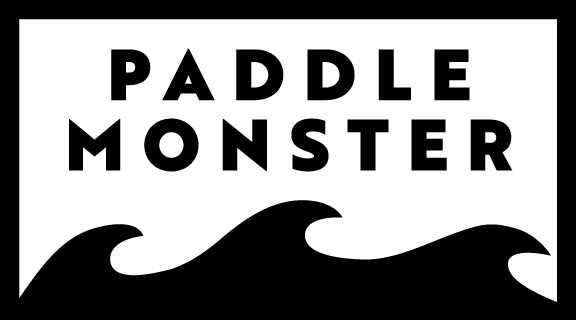
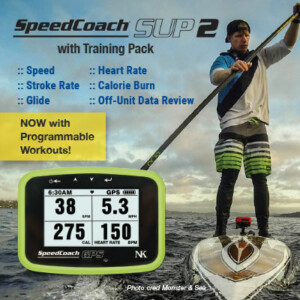
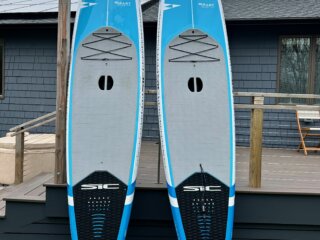
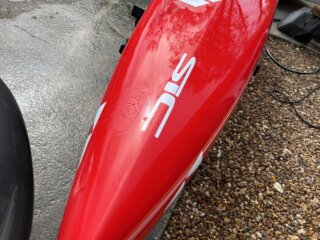
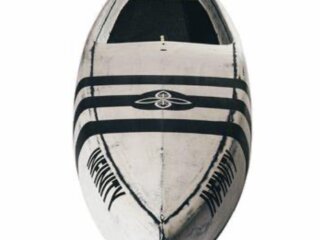
4 Comments
David Baumrind
Thank you for this!
I do have a question… during the catch, with downward force, is it possible to bury the blade too much?
David
David Baumrind
Thank you for this!
I do have a question… during the catch, with downward force, is it possible to bury the blade too much?
David
Annabelle Yates
Thank you Larry! This is such a great article and will help me both as a paddler and a coach – I appreciate you covering both viewpoints….and SUP harness? Mind blown!! 🤯
Annabelle Yates
Thank you Larry! This is such a great article and will help me both as a paddler and a coach – I appreciate you covering both viewpoints….and SUP harness? Mind blown!! 🤯